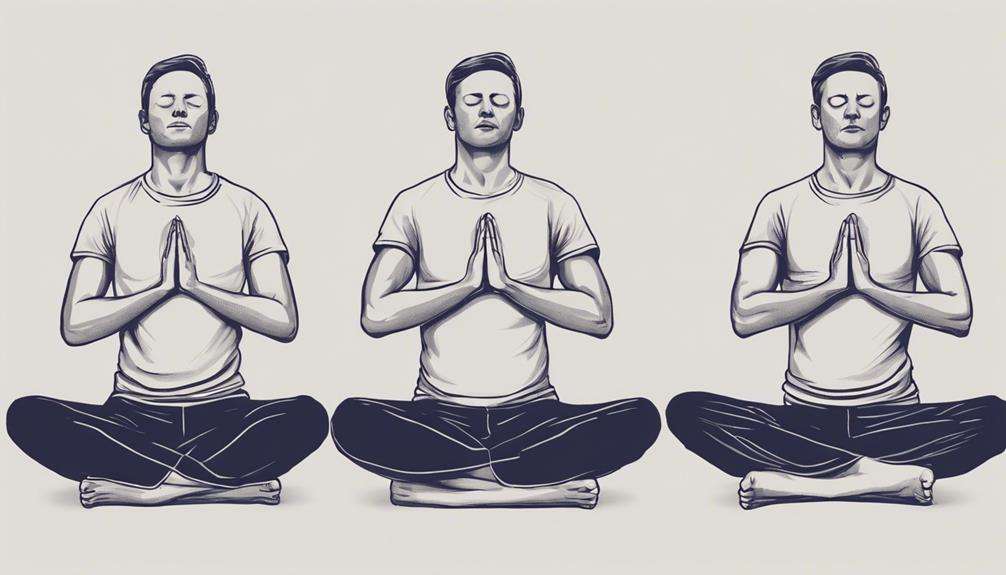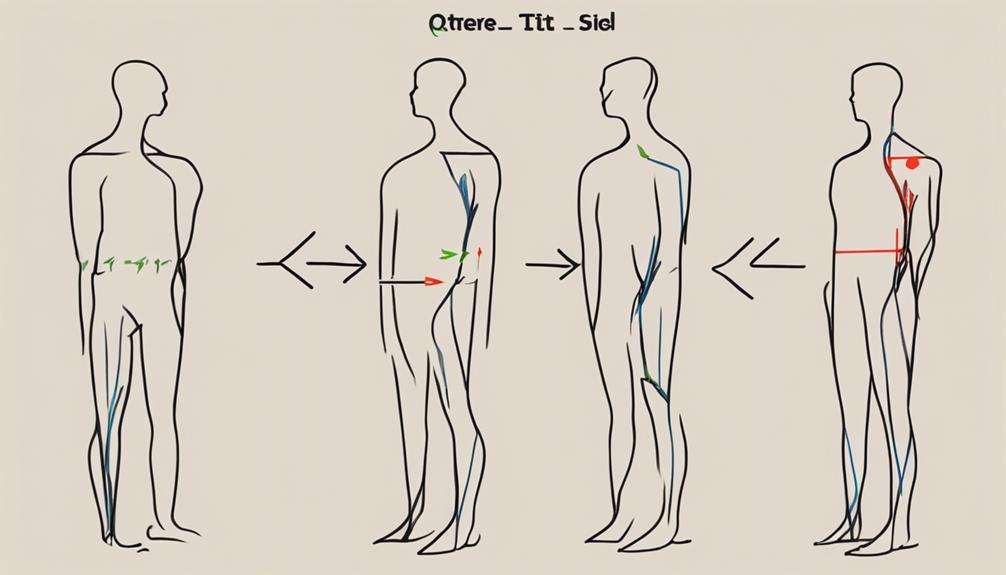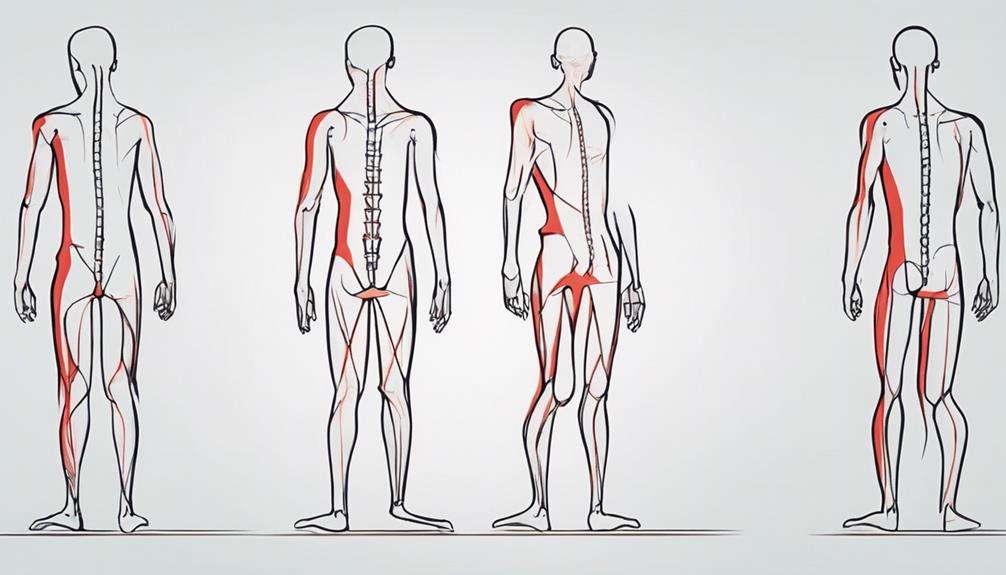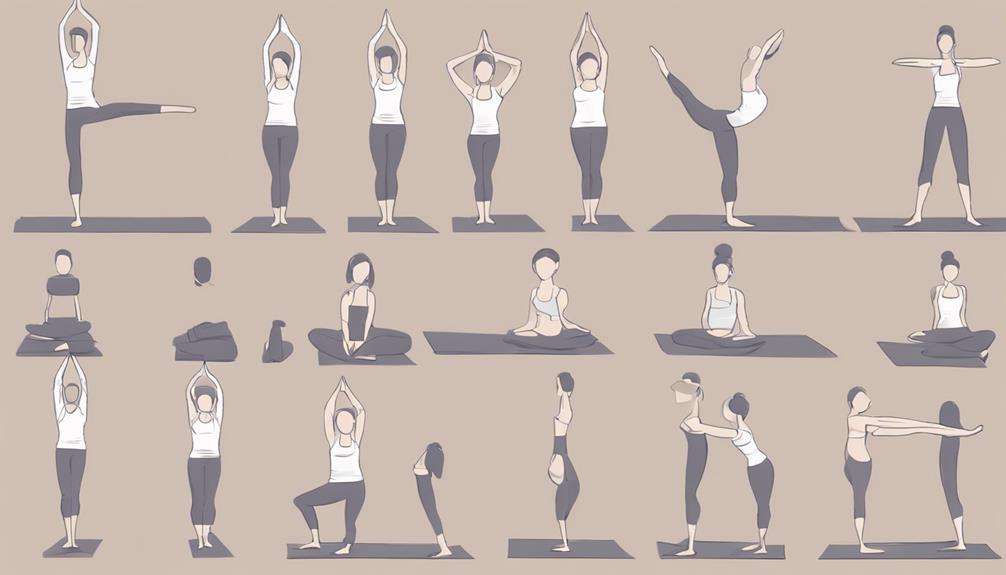When it comes to improving your posture, the key lies in the alignment of your spine. By incorporating mindful spinal alignment meditation into your daily routine, you can experience a transformation in how your body feels and moves.
Imagine a posture that not only exudes confidence but also supports your overall well-being. Through simple yet effective techniques, you can discover a path to better alignment and a more comfortable way of being in your body.
Key Takeaways
- Reduce back and neck pain through spinal alignment meditation
- Maintain proper posture for spine health and overall well-being
- Improve muscle efficiency and comfort with aligned posture
- Enhance relaxation, concentration, and mindfulness with mindful practices
Benefits of Mindful Spinal Alignment Meditation
Improving posture and promoting natural spine curvature, mindful spinal alignment meditation offers various benefits for practitioners. By engaging in this practice, you can effectively reduce lower back pain and neck pain. The emphasis on maintaining a gentle sway in the lower back helps support a comfortable and aligned posture, alleviating strain on your spine. Additionally, ensuring that your knees and thighs are positioned lower than the pelvic rim aids in proper alignment, contributing to a healthier spine.
Mindful spinal alignment meditation also focuses on the correct positioning of your chin over the collar bone, keeping ribs down, and shoulders open. These actions enhance spinal alignment and promote stability in your posture. As you continue to practice this meditation technique, you'll notice improvements in your posture, which can lead to a reduction in both lower back and neck pain. Embracing these principles of spinal alignment won't only benefit your meditation sessions but will also positively impact your overall well-being.
Understanding Spinal Alignment for Posture
To understand spinal alignment for posture, you must grasp the importance of maintaining proper alignment to support a healthy back. Achieving good posture through spinal alignment can alleviate discomfort and enhance your overall well-being.
Recognizing the benefits of a well-aligned spine is essential for promoting comfort and concentration during meditation.
Importance of Alignment
Proper spinal alignment plays an important role in supporting good posture and preventing back pain by maintaining the body's natural curves for best weight distribution.
The thoracic spine, forming the middle segment of the spine, is essential for maintaining a neutral spine alignment. Posture is one of the key factors influenced by the alignment of the thoracic spine, affecting the position of the shoulders, neck, and lower back.
When the spine is correctly aligned, the back muscles work efficiently to support the body and reduce the risk of strain or injury. Understanding the importance of alignment in promoting a healthy posture can lead to improved overall well-being and comfort.
Incorporating mindful spinal alignment practices into your routine can help correct poor posture habits and enhance your quality of life.
Benefits of Good Posture
Enhancing your posture through mindful spinal alignment can bring about a multitude of benefits for your overall well-being and physical health. By lifting your chest and maintaining correct spinal alignment, you can prevent muscle strain, joint pain, and fatigue.
When you focus your mind on aligning your spine properly, you improve breathing and circulation, reducing the risk of postural problems. Feeling your body in alignment enhances self-confidence and body awareness, supporting ultimate nerve function.
Good posture not only benefits your physical health but also contributes to your overall well-being. Make it a habit to mindfully adjust your posture throughout the day to reap these benefits and improve your quality of life.
Importance of Mindful Breathing Techniques

Utilizing mindful breathing techniques can greatly impact your overall well-being by calming the nervous system, reducing stress, and promoting relaxation during meditation practice. When practicing yoga poses or focusing on meditation posture, incorporating deep breathing can effectively alleviate back pain and improve spinal alignment.
Deep breathing exercises have the ability to deceive the brain's pain receptors, providing a natural and essential approach to pain relief. By concentrating on your breath, you enhance relaxation, concentration, and mindfulness, allowing for a more fulfilling meditation experience.
Controlled breathing not only helps release tension in the back but also plays an important role in enhancing oxygen flow throughout the body. By integrating mindful breathing techniques into your meditation routine, you not only reduce back pain but also promote better spinal alignment, leading to improved posture and overall well-being. Remember, the power of your breath can positively influence your physical and mental state during meditation.
Guided Meditation for Spinal Alignment
When practicing guided meditation for spinal alignment, focus on the benefits of maintaining proper posture to prevent discomfort and enhance your concentration.
Learn specific techniques to align your spine, such as supporting the natural arch in your lower back and positioning your chin over the collarbone.
Benefits of Alignment
Improving your spinal alignment through guided meditation offers numerous benefits for your overall well-being and body functionality. Mindful alignment stretches and lengthens the spine, promoting proper posture and reducing tension.
This practice not only supports spinal alignment but also helps release any built-up stress and discomfort in the back, leading to reduced back pain and improved body mechanics. By aligning your spine during meditation, you can enhance your focus and cultivate a sense of relaxation and mindfulness.
Additionally, practicing spinal alignment in meditation can positively impact your breathing patterns, circulation, and overall mind-body connection. Embracing mindful spinal alignment can result in improved energy flow and a stronger sense of holistic well-being.
Techniques for Alignment
Employing guided meditation techniques for spinal alignment involves maintaining a natural spine curve to enhance comfort and focus. To achieve proper alignment during meditation, focus on maintaining a gentle sway in the lower back. This not only aids in comfort but also improves posture.
Keep your knees and thighs lower than the pelvic rim for better posture and relaxation. Additionally, make sure that your chin is positioned back over the collar bone to prevent neck pain and maintain balance.
Importance of Posture
To achieve peak spinal alignment in guided meditation, focus on maintaining a natural spine curve for enhanced comfort and concentration.
Close your eyes to heighten body awareness, ensuring that your neck and shoulders are relaxed. Sitting up straight is essential as it prevents back and neck pain, reducing discomfort that can disrupt your focus.
By maintaining proper posture, you can avoid headaches and other discomforts that may arise from slouching, ultimately improving the quality of your meditation practice.
Remember that discomfort from poor posture can hinder the benefits of meditation on mental clarity and relaxation.
Embrace mindful spinal alignment meditation as a tool to promote a healthy posture that supports overall well-being and mindfulness.
Incorporating Yoga for Postural Support
Incorporating yoga into your meditation routine enhances postural support by strengthening and stretching key back muscles. Simple yoga poses like Mountain Pose and Cat-Cow Stretch target the low back, promoting better posture and overall spinal health. These poses help in building core strength and increasing flexibility, essential for maintaining proper alignment. Downward Facing Dog pose not only relieves back pain but also engages core muscles important for postural support. Additionally, Sphinx Pose is beneficial for relaxing back muscles, reducing pain, and strengthening the back and core muscles.
Practicing these simple yoga poses during meditation sessions can significantly enhance your flexibility, alignment, and focus. Additionally, including yoga in your meditation routine not only promotes relaxation and releases tension but also supports spinal alignment, ultimately improving your overall posture. By incorporating yoga for postural support, you can experience the combined benefits of mental health relaxation and physical well-being.
Visualization Practices for Spinal Health
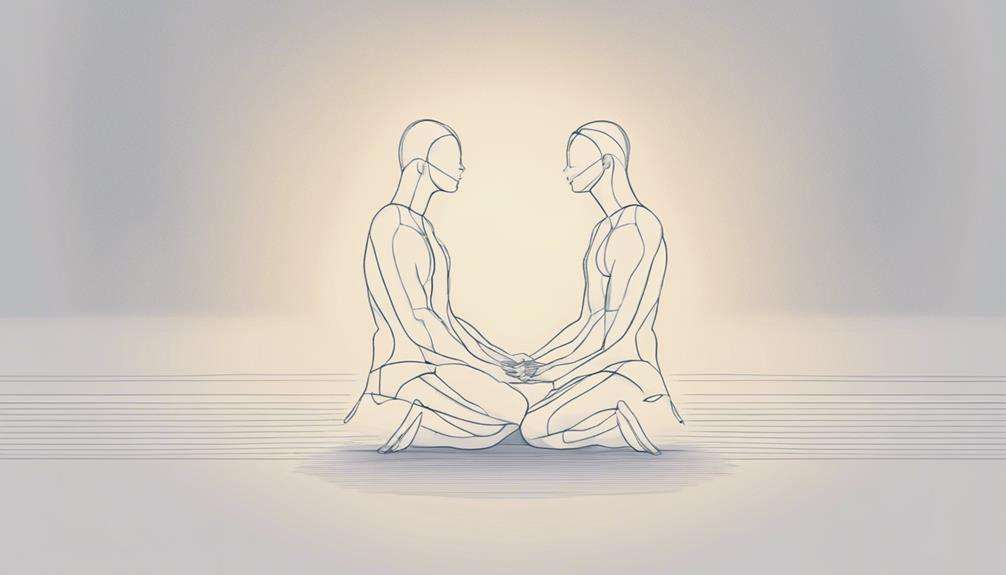
Enhance your meditation practice and promote spinal health through visualization techniques that focus on mindful awareness of spinal alignment. Visualization practices play an important role in improving spinal health by encouraging a heightened sense of mindful awareness towards the alignment of your spine.
By imagining a straight, aligned spine during meditation, you can instill better posture habits that can be carried throughout your day. Visualizing the natural curves of your spine and concentrating on proper alignment can help reduce strain on your back muscles, leading to decreased discomfort and improved overall spinal health.
Picture a strong and well-supported spine while meditating to train your mind to prioritize and maintain correct spinal alignment. Utilizing visualization techniques during meditation sessions allows you to create a mental blueprint for a healthy and properly aligned spine, reinforcing the importance of mindful awareness in promoting spinal health and overall well-being.
Mindfulness Exercises for Better Alignment
Visualize your spine's alignment with mindfulness exercises to enhance your posture and support spinal health. By practicing mindfulness techniques, you can develop a heightened sense of awareness regarding your spinal alignment.
Begin by sitting or standing in a comfortable position, focusing on the natural curves of your spine. Be mindful of any tendency to slouch or hunch over, as these habits contribute to poor posture. Pay attention to the sensations in your body as you maintain this position, making adjustments as needed to align your spine properly.
Through mindful awareness, you can prevent issues such as back pain, muscle strain, and the development of poor posture habits. Listen to your body's signals and consciously choose to improve your alignment during these exercises.
Maintaining Consistency in Meditation Practice

Regularly practicing meditation strengthens the mind-body connection, fostering improved posture through consistent alignment awareness. Importance in meditation practice is vital for reaping the full benefits of mindful spinal alignment. By dedicating time each day to meditative practices focused on spinal alignment, you reinforce the neural pathways that support proper posture. This daily reinforcement helps solidify the habit of maintaining a straight spine and aligned posture throughout your daily activities.
Through long-term commitment to consistent meditation, you can make lasting changes in your posture. The regular practice of mindfulness exercises aimed at spinal alignment enhances your overall mind-body connection, allowing you to develop a heightened awareness of your body's positioning. This mindful awareness extends beyond meditation sessions and becomes integrated into your daily life, supporting a more naturally aligned posture. By prioritizing importance in your meditation practice, you pave the way for improved posture and enhanced well-being.
Frequently Asked Questions
Can Meditation Improve Posture?
Meditation benefits your posture by promoting relaxation, reducing tension, and enhancing mind-body connection. Through alignment awareness, it supports proper spine alignment, prevents slouching, and increases body awareness for better posture habits.
How Do I Keep My Spine Straight During Meditation?
To maintain a straight spine during meditation, focus on body awareness. Engage core muscles for support, use lumbar support like a cushion, keep shoulders relaxed, and align your head with your spine. Avoid slouching by sitting tall.
Which Pose Is Ideal for Mindful Meditation?
Sit in a seated position for mindful meditation to reap benefits like improved posture, alignment, and mind-body connection. Make sure proper alignment for mindful breathing by keeping a straight spine, relaxed shoulders, and engaged core.
What Does Mindful Posture Help With?
Straighten up like a sturdy tree swaying in the breeze, mindful posture provides relief from pain, sharpens focus, deepens breath, and steadies your balance. Embrace these benefits for a healthier, more centered you.
Conclusion
As you continue to practice mindful spinal alignment meditation, you'll experience a transformation in your posture and overall well-being. Stay consistent in your meditation practice and you'll reveal a sense of balance and alignment that will support you in all aspects of your life.
Keep focusing on your breath, visualizing your spine in perfect alignment, and incorporating yoga for additional support. The benefits are endless, so keep up the good work and watch your posture improve!

